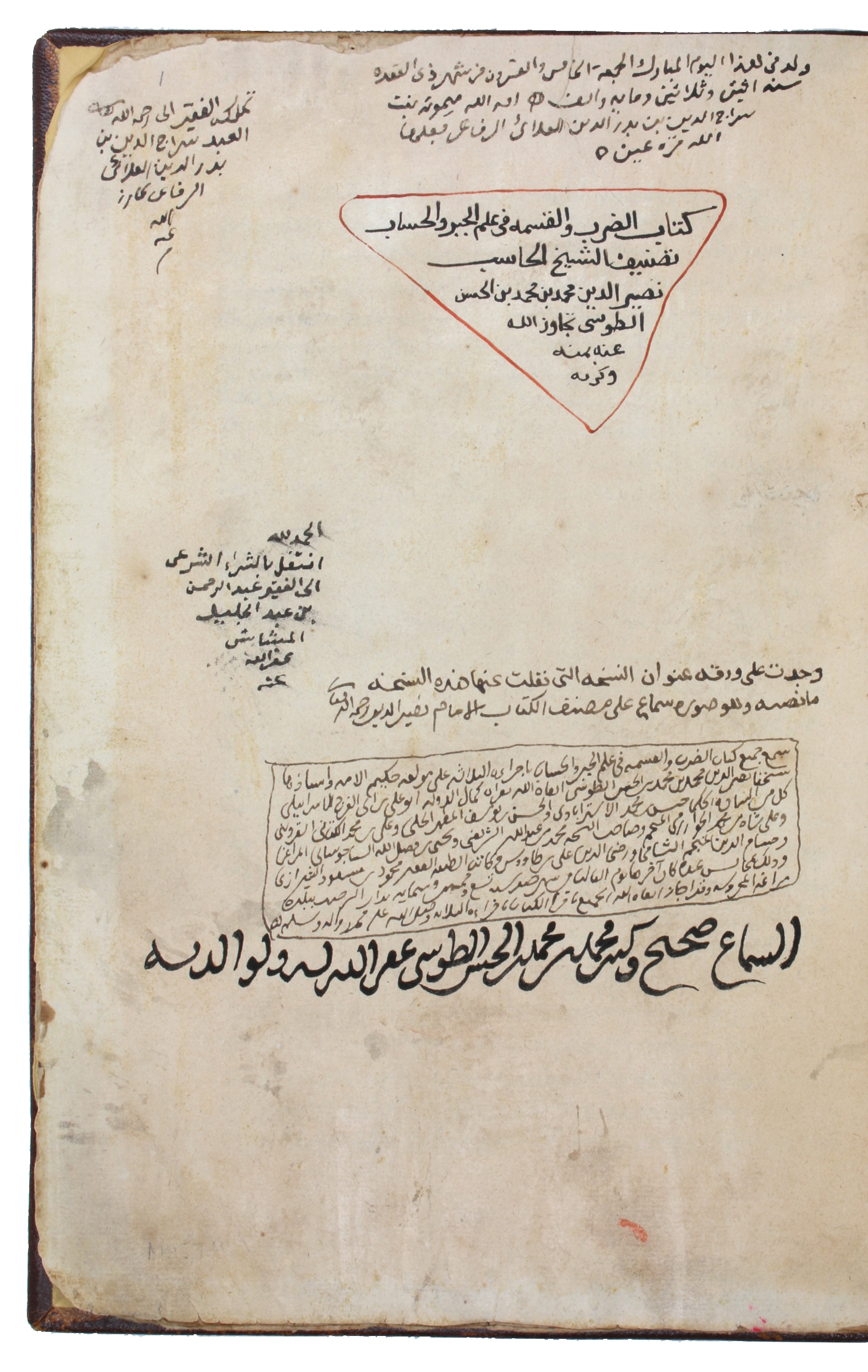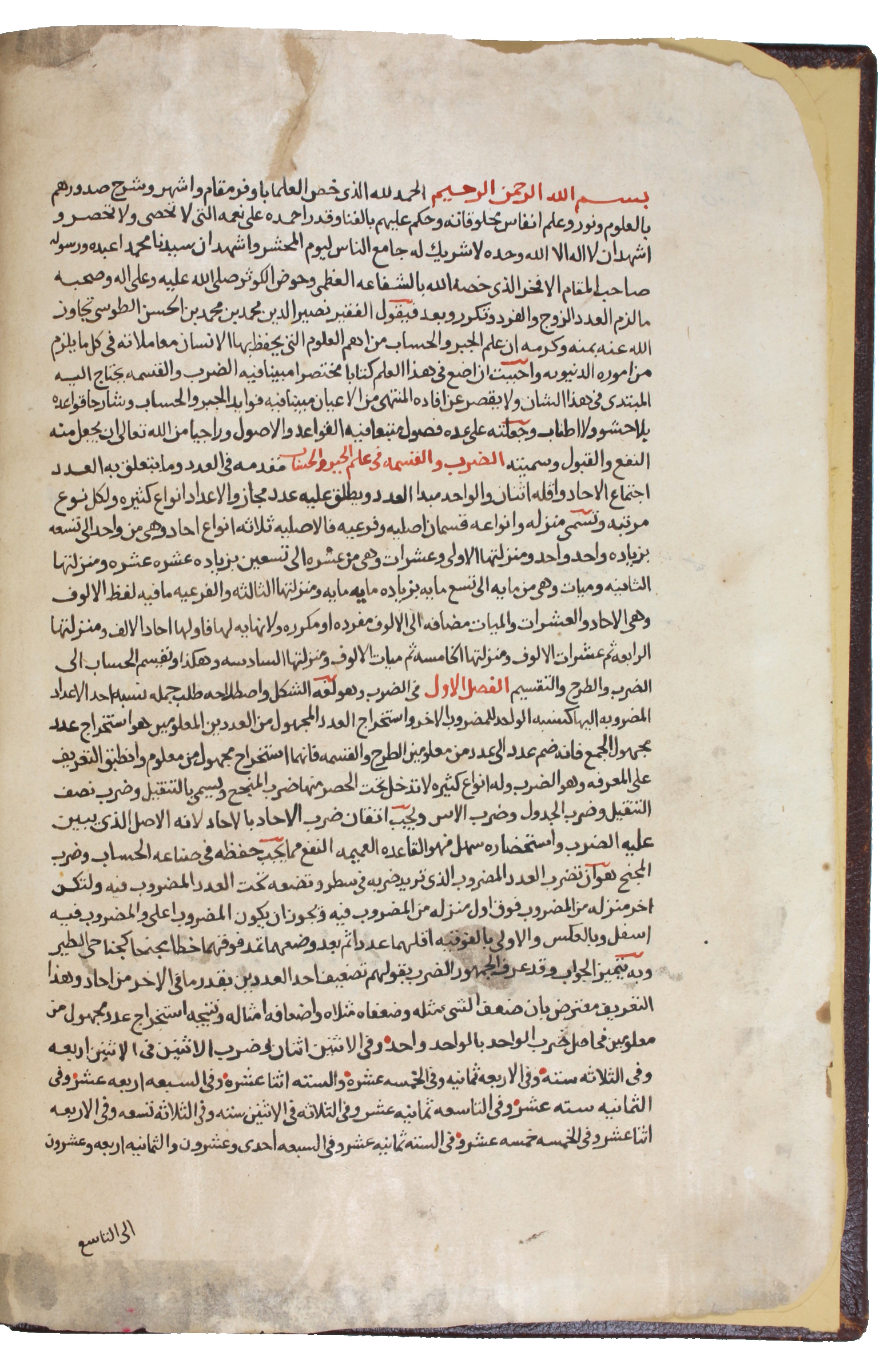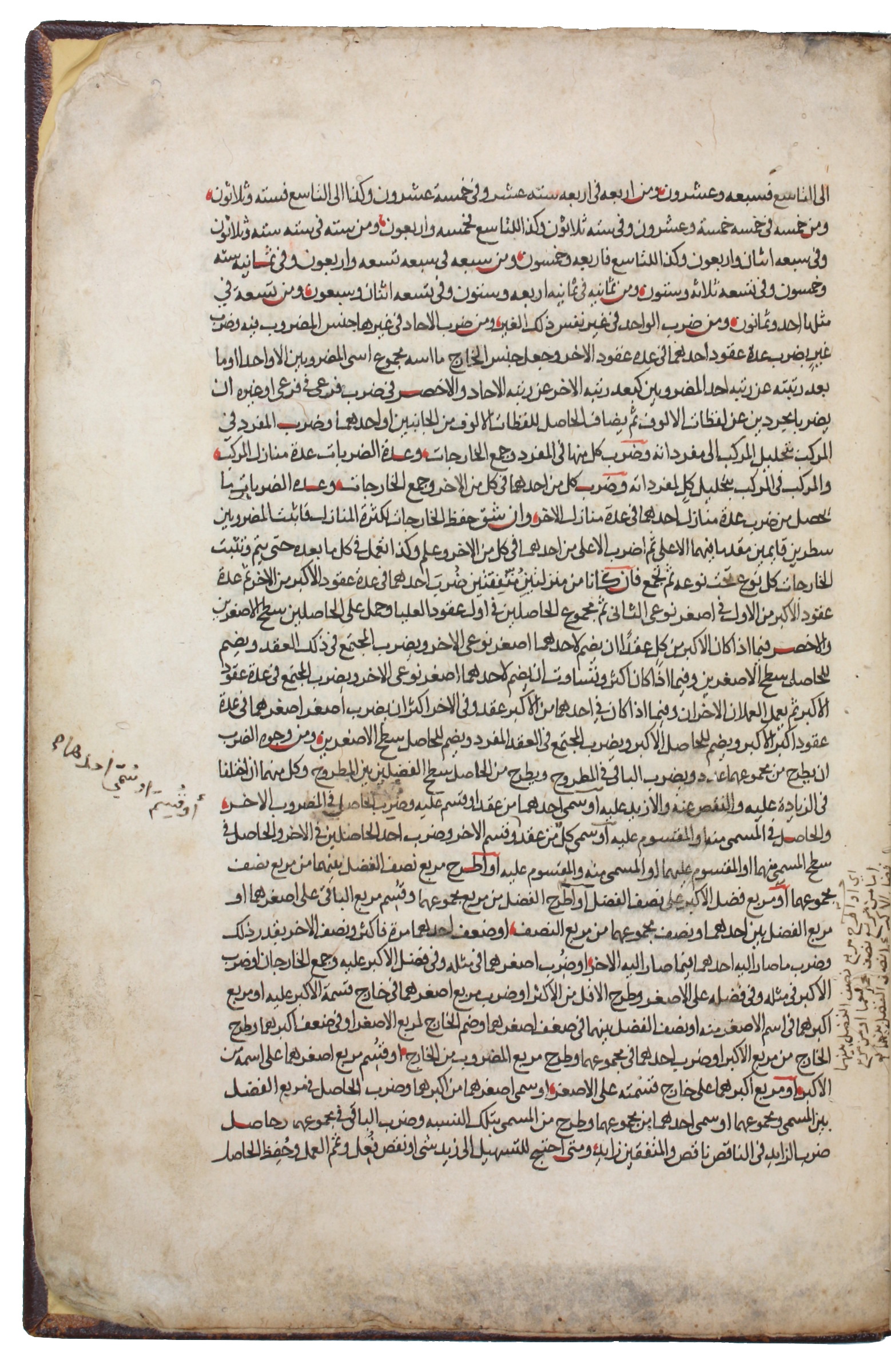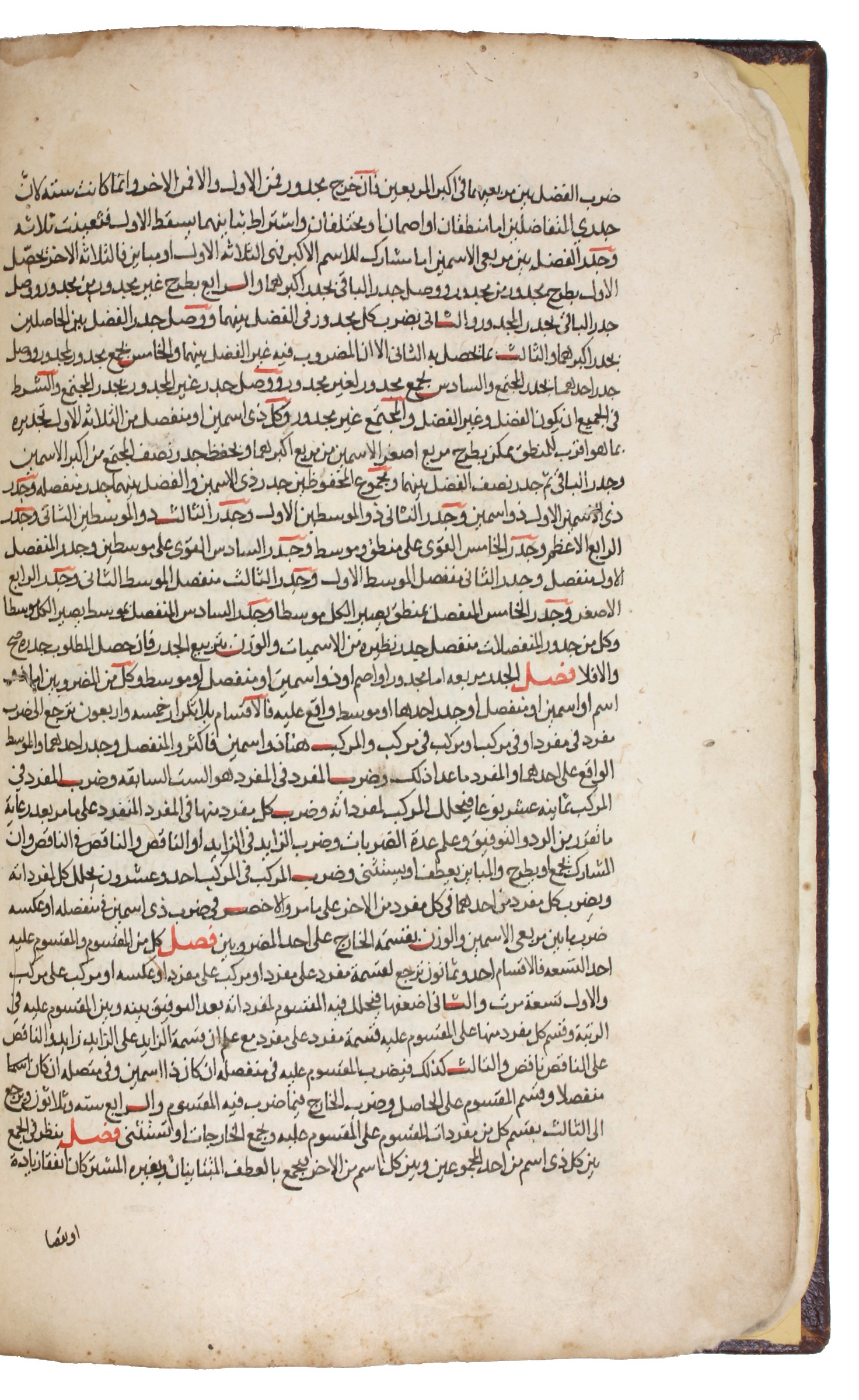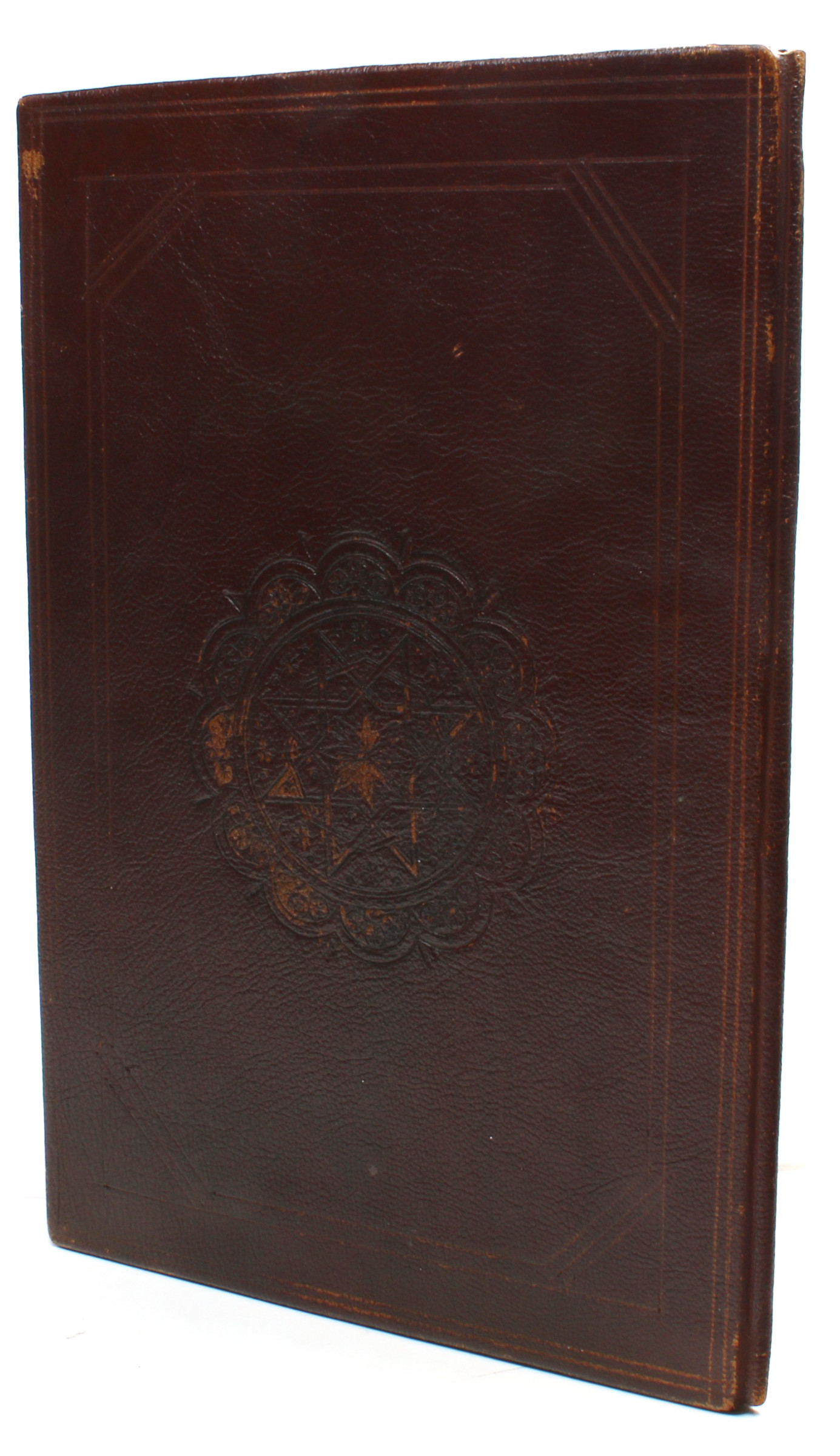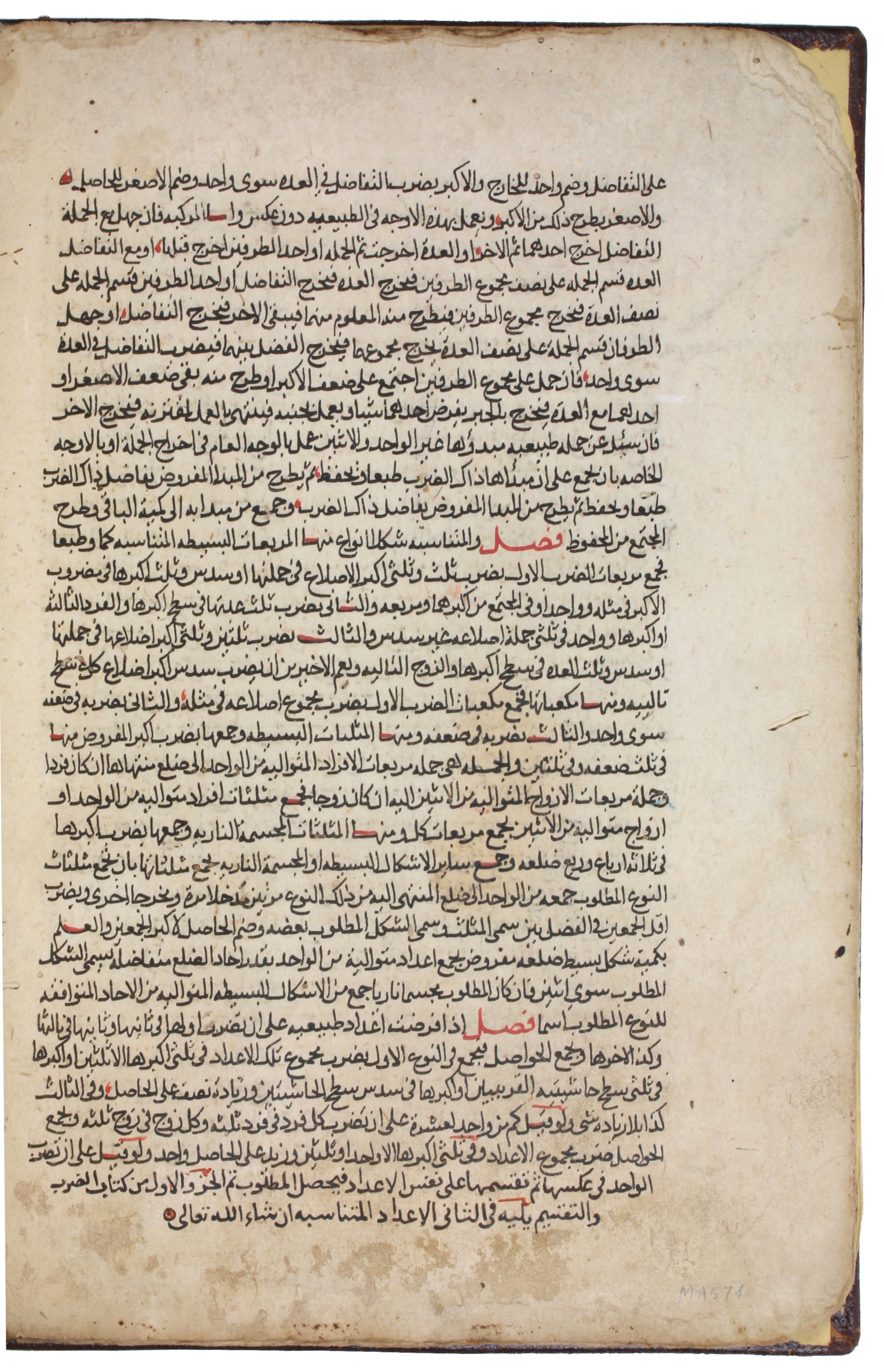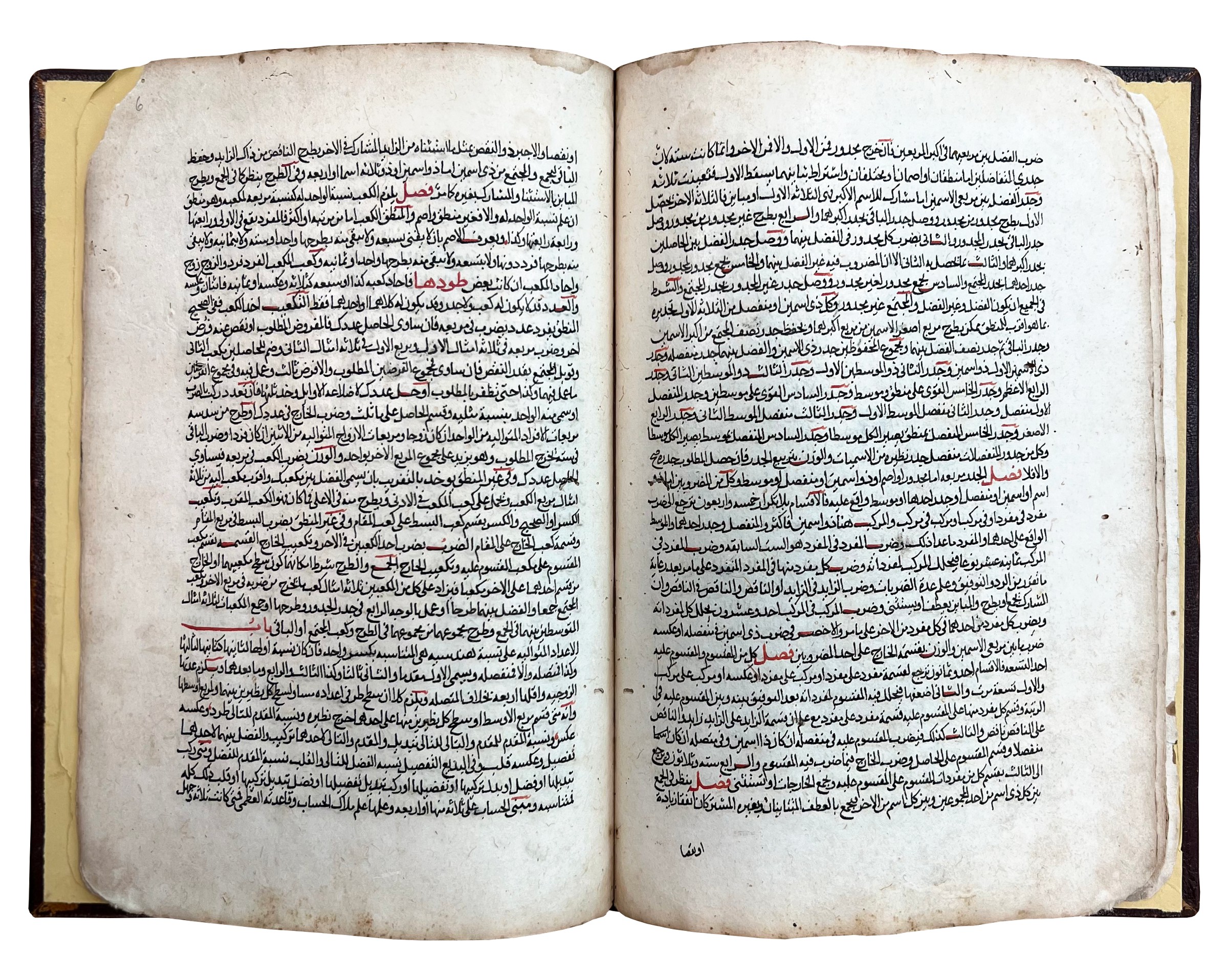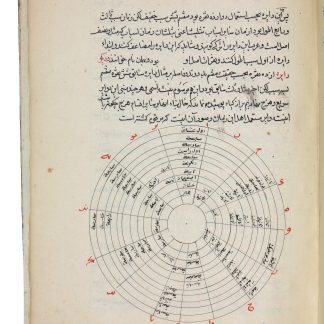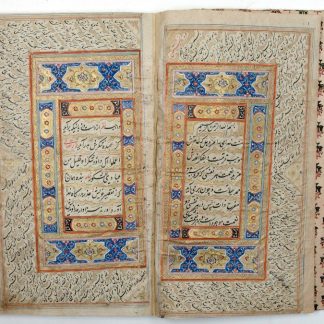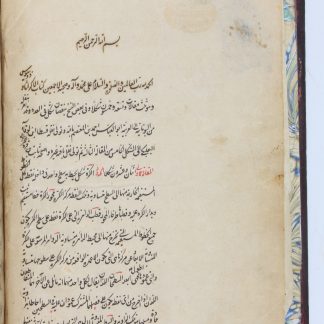Early Arabic mathematical manuscript
Kitab ad-darb wa'l-qisma fi 'ilm al-jabr wa al-hisab [On multiplication and division].
Large 4to (187 x 274 mm). Arabic manuscript on paper. (18) pp., 31 lines per extensum. Written in clear, neat black naskh, emphases picked out or underlined in red; catchwords. Modern brown leather binding with blind rules and stamped central medallions to both covers.
€ 35,000.00
A late 14th or early 15th century mathematical manuscript, probably written in Iran or possibly the Eastern Mediterranean. The Persian scholar Nasir al-Din Muhamad ibn Muhamad ibn al-Hasan at-Tusi (1201-74) was known for his extensive work on science, physics, mathematics and theology. He is often credited with the invention and identification of trigonometry as an independent division of mathematics (cf. GAL I, 509), and the lunar crater "Nasireddin" is named after him. As well as compiling many important works in these fields, he is also known for translating the definitive Arabic editions of Euclid, Ptolemy and Archimedes' works, among others. The only other copy of his present work, treating multiplication and division in algebra and arithmetic, survives in the Topkapi Seray in Istanbul (MS 3327: a more extensive version in 3 books and 11 sections, 51 ff.).
Light dampstaining throughout, mostly confined to lower borders; edges frayed.
GAL S I, p. 930, no. 36a. B. A. Rosenfeld & E. Thsanoglu, Mathematicians, Astronomers and other Scholars of Islamic Civilisation and their Works (Istanbul 2003), pp. 211-219, M18. Krause, Stambuler Handschriften Islamischer Mathematiker, p. 497, no. 12.

